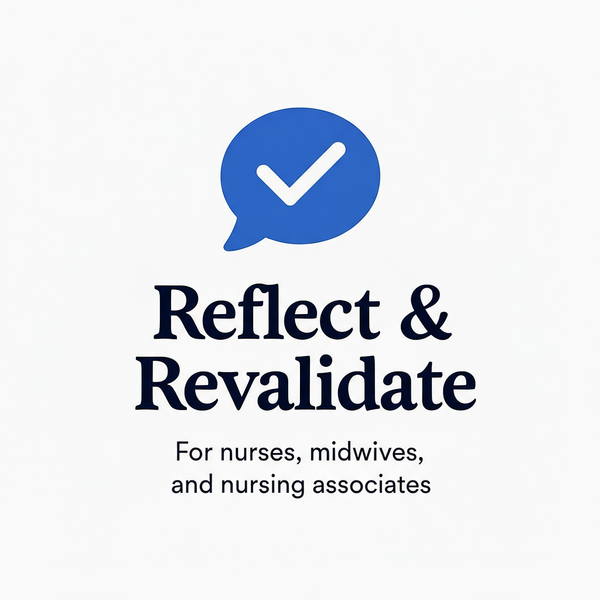Reflection: Recognising Safeguarding Concerns in A&E
Share
Submitted by: Jamie - Children's Emergency Nurse with 3 years experience
What was the nature of the CPD activity and what did you hope to learn from it?
I was working in the children's emergency department when a 6-year-old boy, Tyler (pseudonym), was brought in by his mother with a fractured arm. She explained he had fallen off his bike. On the surface, this seemed like a straightforward paediatric injury.
However, several things made me uneasy. Tyler was very quiet and withdrawn, avoiding eye contact. When I gently examined his arm, I noticed several bruises on his upper arms and back in various stages of healing. His mother's explanation of the bike accident didn't quite match the injury pattern, and Tyler flinched when his mother raised her voice to tell him to 'stop being silly.'
I had a gut feeling that something wasn't right, but I was uncertain whether I was overreacting or if these were genuine safeguarding concerns. I hoped to learn how to recognise potential abuse, trust my professional judgment, and follow appropriate safeguarding procedures.
What did you learn from the CPD activity?
I learned to trust my instincts when something doesn't feel right. While no single indicator definitively proves abuse, the combination of factors—unexplained bruising, inconsistent history, the child's behaviour, and my gut feeling—warranted further investigation.
I learned the importance of thorough, objective documentation. I carefully recorded Tyler's injuries using a body map, documented the explanation given, and noted his demeanour and interactions with his mother. This factual, non-judgmental documentation provided crucial information for the safeguarding team.
The experience taught me about appropriate escalation. I discussed my concerns with the senior nurse and the paediatric doctor, who agreed that a safeguarding referral was appropriate. I learned that it's not my role to investigate or prove abuse—my role is to recognise concerns and ensure they're properly reported.
I also learned about the importance of maintaining a professional, non-judgmental approach with the family. Even though I had concerns, I continued to provide compassionate care to Tyler and his mother, ensuring they didn't feel accused or judged while the appropriate processes were followed.
How did you change or improve my practice as a result?
I now pay closer attention to the whole picture when assessing children—not just the presenting injury, but the child's behaviour, the family dynamics, the consistency of the history, and any other concerning features. I've learned that safeguarding is everyone's responsibility, not just the designated safeguarding lead.
I've improved my documentation practice significantly. I now always use body maps for injuries, record explanations verbatim, and document observations objectively without making assumptions or judgments. This creates a clear record that can support safeguarding decisions.
I've also become more confident in raising concerns. Following this experience, I completed additional safeguarding training and now understand the thresholds for different levels of concern and the appropriate referral pathways. I know that it's better to raise a concern that turns out to be nothing than to miss potential abuse.
I've learned to separate my personal feelings from my professional responsibilities. Even when I'm uncertain or worried about getting it wrong, I now focus on following the correct procedures and trusting the safeguarding process.
How is this relevant to the Code?
This reflection demonstrates several aspects of the NMC Code:
Prioritise people (1.4): I made sure Tyler's safety and wellbeing were my priority by recognising and acting on potential safeguarding concerns.
Preserve safety (13.1): I recognised a potential risk to a child's safety and took appropriate action by escalating my concerns through proper channels.
Raise concerns immediately (16.1): I didn't delay in sharing my concerns with senior colleagues and ensuring a safeguarding referral was made.
Practise effectively (6.2): I maintained clear, accurate, and contemporaneous records that documented my concerns objectively.
Promote professionalism and trust (20.8): I acted without delay if I believed a child was at risk, fulfilling my professional duty to protect vulnerable children.
Do you have any further comments?
Following the safeguarding referral, a multi-agency investigation was initiated. I later learned that Tyler and his siblings were placed on a child protection plan, and the family received support from social services. While I don't know all the details, I know that raising my concerns was the right thing to do.
This experience was emotionally challenging—I worried about whether I was doing the right thing and felt anxious about the potential consequences for the family. However, I've learned that child protection is paramount, and nurses have a crucial role in identifying and reporting concerns.
I now encourage junior colleagues to trust their instincts and never hesitate to raise safeguarding concerns. It's not our job to prove abuse—it's our job to recognise concerns and ensure they're properly investigated by the appropriate agencies. Every child deserves to be safe.
